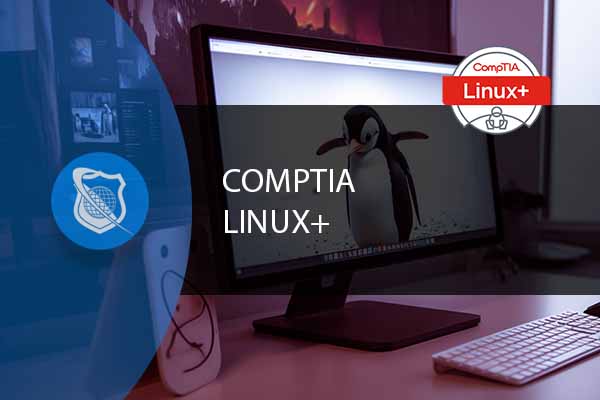What Is Quiescent Consistency?
Definition: Quiescent ConsistencyQuiescent consistency is a weak consistency model used in the context of distributed systems and concurrent programming to describe a system’s state when it is not undergoing any

In the Linux operating system, Linux file permissions play a crucial role in controlling access to files and directories. The chmod command is used to modify these permissions, granting or restricting access to files and directories for users and groups. Understanding how to use chmod effectively is essential for managing the security and accessibility of your Linux system. In this blog, we will dive deep into the chmod command, explaining its syntax and providing extensive examples for each operation.
In Linux, each file and directory has three sets of permissions:
Each permission set consists of three characters: read (r), write (w), and execute (x). Here’s what each permission does:
cd into it).Before we delve into examples, it’s essential to understand how permissions are represented numerically in Linux. Each permission is assigned a numeric value:
To set permissions using chmod, you’ll use a three-digit number representing the combination of these values for the owner, group, and others. For example, if you want to give read and write permissions to the owner, but only read permissions to the group and others, the numeric representation would be 644.

ITU Offers an extensive in-depth course designed to prepare you for your CompTIA Linux+ certification. This globally recognized certification adds great value to your resume and future career prospects. View our CompTIA Linux+ Training Today.
chmod for Various OperationsChanging Owner Permissions: To grant read, write, and execute permissions to the owner of a file named “example.txt”:
chmod u+rwx example.txt
Changing Group Permissions: To give read and execute permissions to the group of the file “example.txt”:
chmod g+rx example.txt
Changing Other Permissions: To allow others to read a file named “example.txt”:
chmod o+r example.txt
Changing Permissions for All Users: To grant read and write permissions to all users for a file “shared.txt”:
chmod a+rw shared.txt
Revoking Specific Permissions: To remove execute permissions for others on a shell script named “script.sh”:
chmod o-x script.sh
Setting Permissions Numerically: To set specific permissions using numeric representation (e.g., owner: read, write; group: read; others: none):
chmod 640 data.txt
Recursively Changing Permissions for Directories: To change the permissions of a directory “documents” and all its contents (recursively) to give read and execute permissions to the owner and group, and no permissions to others:
chmod -R ug+rx,o-rwx documents/
There are several popular GUI applications available to manage Linux file permissions, making the process more user-friendly for those who prefer graphical interfaces. Here are some widely used GUI tools:
Remember that GUI applications to manage file permissions are desktop environment-dependent, and the availability of specific tools may vary based on the Linux distribution and desktop environment you are using. Additionally, command-line tools like chmod and chown remain the most versatile and powerful means to manage file permissions in Linux.
Setting all file permissions to 777 (rwxrwxrwx) is generally not recommended due to significant security risks. It grants full read, write, and execute permissions to the owner, group, and all other users on the system. This permissive approach can lead to various security vulnerabilities and potential issues:
Instead of using 777 permissions, it is recommended to follow these best practices:
By following these best practices, you can strike a balance between functionality and security, ensuring that your Linux system remains protected from unauthorized access and potential vulnerabilities.
Mastering the chmod command in Linux is vital for managing file permissions effectively. By understanding the basic permission sets and their numeric representation, you can control access to files and directories with precision. In this blog, we’ve explored extensive examples of using chmod to modify permissions for users, groups, and others. With this knowledge, you can confidently manage file security and accessibility on your Linux system. Always remember to exercise caution when changing permissions, as improper settings may lead to unintended consequences or security risks.
Linux file permissions are a set of rules that determine who can access, modify, or execute a file or directory. They are represented by three sets of permissions: owner, group, and other (world). Each permission set consists of read (r), write (w), and execute (x) rights.
You can view file permissions in Linux using the ls -l command. This command displays detailed information about files and directories, including their permissions, ownership, size, and modification timestamps. The file permissions will be displayed as a sequence of characters, such as “rw-r–r–” for a file with read and write permissions for the owner and read-only permissions for the group and others.
To change file permissions in Linux, you can use the chmod command followed by the desired permission settings. You can specify permissions using either symbolic notation (e.g., u+rwx, g-w, o+r) or numeric notation (e.g., 755, 644). For example, to grant read and write permissions to the owner of a file named “example.txt,” you would use chmod u+rw example.txt.
The “chmod +x” command gives the execute permission to a file, allowing it to be executed as a script or a binary. For example, if you have a script file named “script.sh,” you can make it executable with the command chmod +x script.sh.
Yes, you can change permissions for multiple files or directories at once in Linux using the chmod command with the recursive option (-R). This allows you to modify permissions for a directory and all its contents. For instance, to give read and write permissions to the owner and group for all files and directories within a folder named “data,” you can use the command chmod -R ug+rw data/. However, be cautious when using the recursive option, as it will modify permissions for all files and directories within the specified location.
You may also like:
What is a Hard Link in Linux : How It Differs from a Soft Link
Linux Config File : Essential Commands You Need to Know
chown vs chmod : Understanding the Differences in Linux File Permissions
Lorem ipsum dolor sit amet, consectetur adipiscing elit. Ut elit tellus, luctus nec ullamcorper mattis, pulvinar dapibus leo.
$49.99 Original price was: $49.99.$16.99Current price is: $16.99. / month with a 10-day free trial
Definition: Quiescent ConsistencyQuiescent consistency is a weak consistency model used in the context of distributed systems and concurrent programming to describe a system’s state when it is not undergoing any
Definition: Application Service Agreement (ASA)An Application Service Agreement (ASA) is a contractual framework between a service provider and a client, specifying the terms under which application services, including development, maintenance,
Definition: Python GeventPython Gevent is a coroutine-based Python networking library that uses greenlets to provide a high-level synchronous API on top of the libev event loop. It is designed to
Definition: Message DigestA message digest is a cryptographic hash function output that provides a fixed-size string of characters from an input of any size. It serves as a digital fingerprint
Definition: Hybrid CryptosystemA hybrid cryptosystem is a cryptographic system that combines the efficiency of symmetric encryption with the security advantages of asymmetric encryption. It utilizes the best features of both
Definition: Hypervisor-Level AttackA hypervisor-level attack targets the hypervisor, also known as the virtual machine monitor (VMM), a crucial layer of software that enables virtualization in computing environments. This type of
Definition: Pretty Good PrivacyPretty Good Privacy (PGP) is a data encryption and decryption program that provides cryptographic privacy and authentication for data communication. PGP is used for securing the transmission
Definition: Disk ArrayA disk array is a storage system consisting of multiple disk drives, which are organized and managed as a single entity to improve performance, increase data redundancy, and
Definition: Data IndexA data index is a data structure that improves the speed of data retrieval operations on a database table at the cost of additional writes and storage space
Definition: Object-Oriented Database System (OODBS)An Object-Oriented Database System (OODBS) is a database management system (DBMS) that supports the storage and management of data in an object-oriented programming format. OODBS integrates
Definition: GPU DatabaseA GPU database is a type of database that leverages the power of Graphics Processing Units (GPUs) to perform data processing tasks significantly faster than traditional CPU-based databases.
Definition: Graph DatabaseA graph database is a type of NoSQL database that uses graph theory to store, map, and query relationships. Graph databases are designed to treat relationships between data
ENDING THIS WEEKEND: Train for LIFE at our lowest price. Buy once and never have to pay for IT Training Again.

Get ready for the updated 220-1201 & 220-1202 exams with our brand-new CompTIA A+ training—designed to help you pass with confidence and start your IT career strong. Access this course and over 2,900 hours of expert-led IT training when you sign up for any of our All-Access Passes. Don’t miss out—enroll now and start learning today!